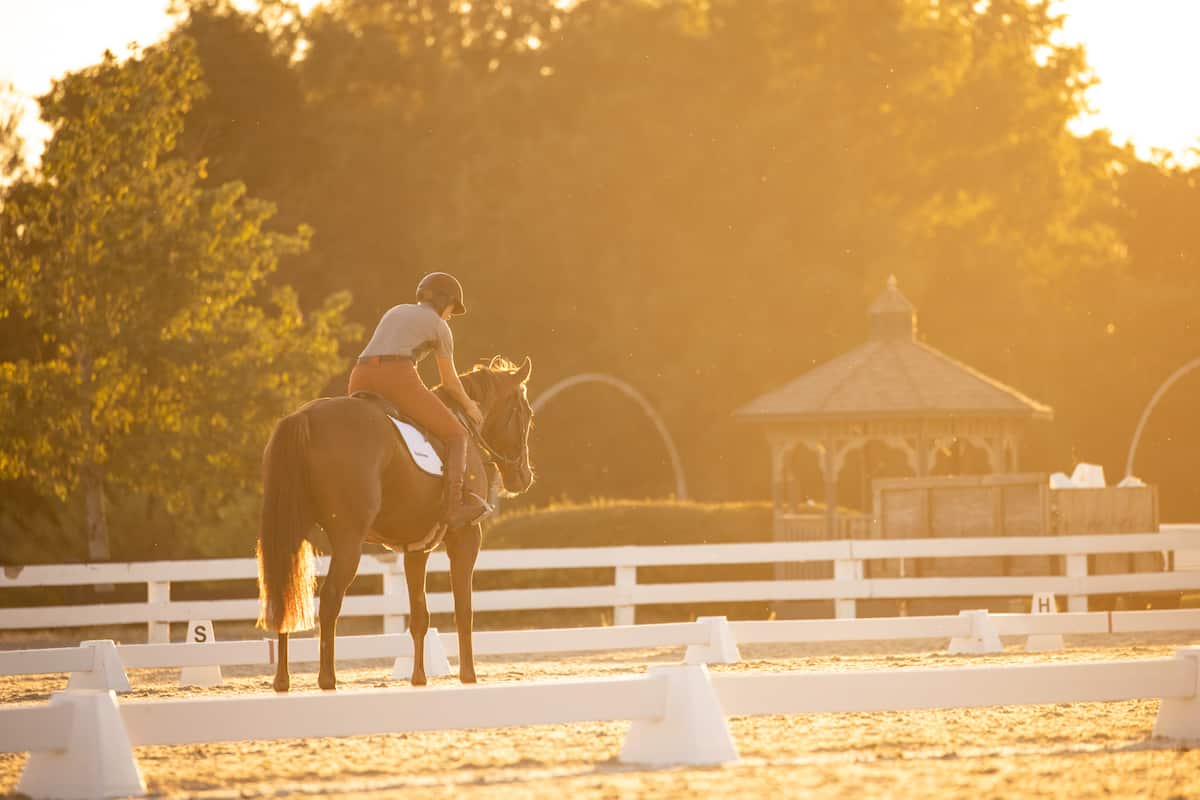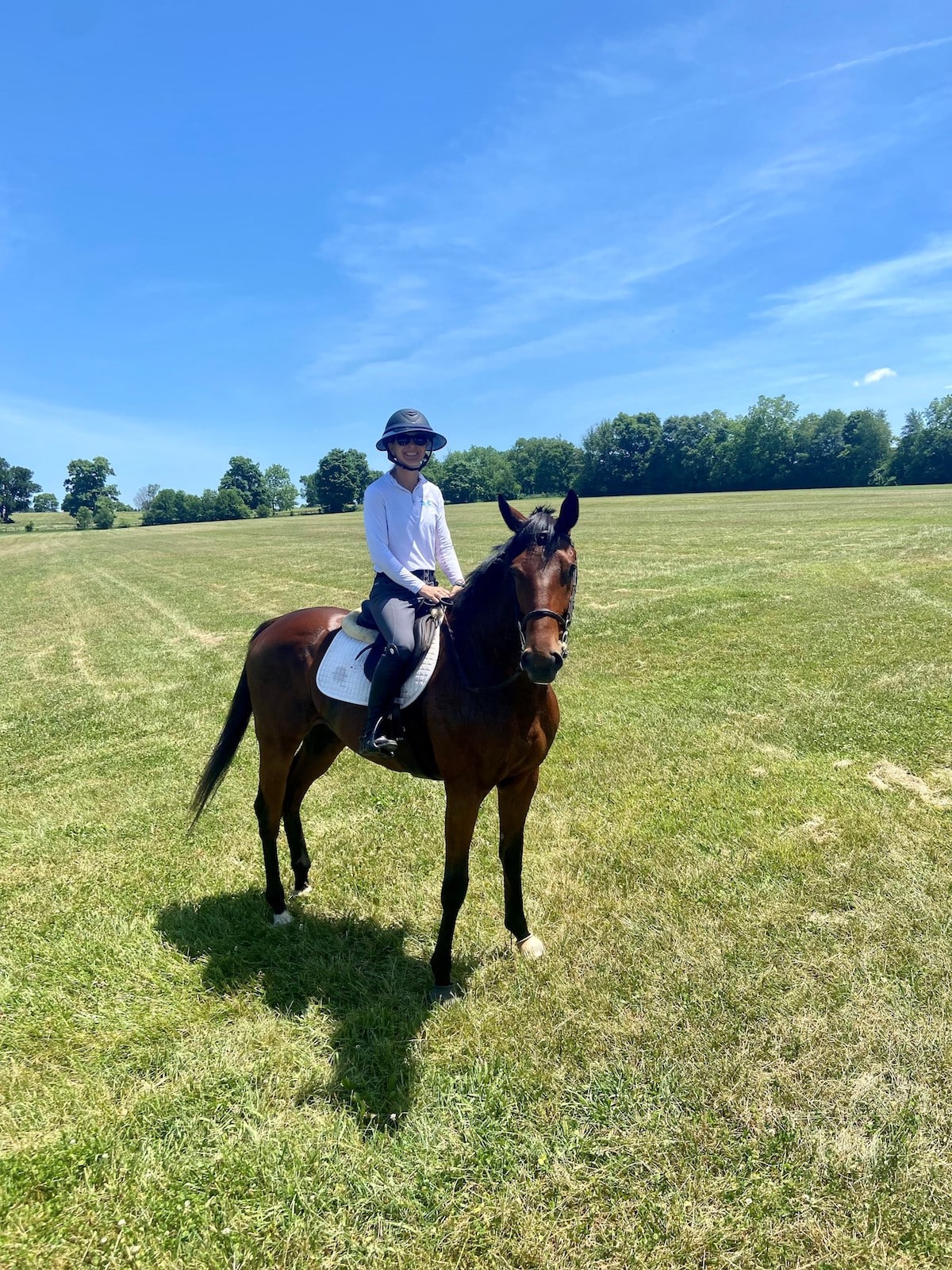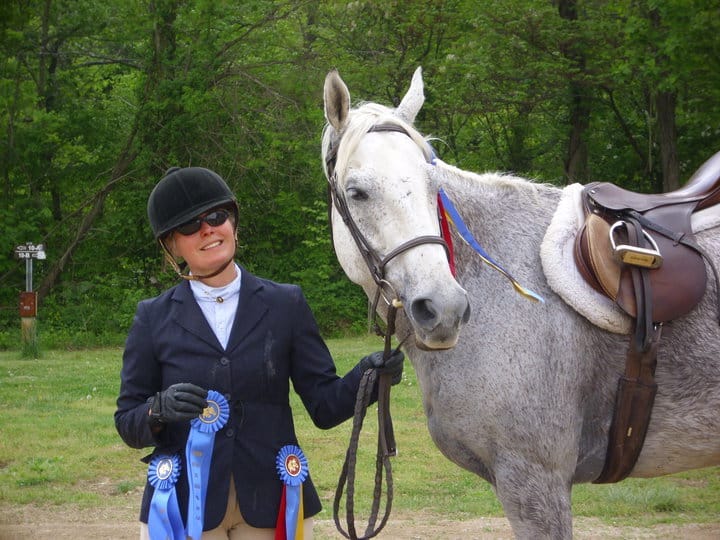
Bethany P Photography
Hunter jumper trainer Ashley Watts equates some riders’ desire to buy or adopt an off-track Thoroughbred (OTTB) to that of an apartment resident who wants a herding dog.
“I deal with people who say they want to ‘rescue’ a Thoroughbred but don‘t understand the breed,” she says. “It’s a nice thought, but it can backfire if someone does not have the proper experience.”
Well-meaning horse people often buy or adopt an OTTB, intending to give it a forever home. Not every horse, however, is someone’s “forever horse” — least of all a Thoroughbred fresh off the track whose temperament, quirks and abilities might only become apparent in the months and years to come.
In this article our sources explain when and why it might be time to move your OTTB on to his or her next person — and why you shouldn’t feel guilty about this often-difficult decision.
Self-Assess Before Shopping
Falling in love with an off-track Thoroughbred might ignite passion initially, but settling into a true partnership over the long term requires commitment and an honest assessment of one’s skills both in and out of the saddle.
Watts, who owns Liftoff Equestrian, in Versailles, Kentucky, and trains and places OTTBs for CANTER Kentucky, says riders must be objective from the start. “People have to be realistic about their horse-handling skills on the ground and while riding,” she says. “You need to be able to trot and canter balanced and handle a horse if it’s spooky or nervous without getting scared of it.”
She notes a significant difference between the competent rider on a schoolmaster and the seasoned equestrian with a green OTTB.
“Different people have different ideas of what advanced (riding ability) means,” she says. “The last thing I want to do is have someone jump a fence when they aren’t comfortable trotting and cantering the horse and have an accident. Both the horse and the rider lose their confidence.”
Experience in the saddle is only part of the puzzle when transitioning a Thoroughbred from the track to a second career. Professional guidance is also key to a successful horse-rider partnership. Erin Calhoun, founder of Pas de Cheval Horse Rescue, a 501(c)(3) nonprofit dedicated to rehabilitating, retraining and rehoming racehorses in Cerrillos, New Mexico, notes that during the height of the COVID pandemic, adoptions of OTTBs at her facility skyrocketed. Still, each one came with a detailed contract outlining the responsibilities a potential horse owner must adhere to before loading up a horse. For example, she requires adopters to work closely with a professional trainer to give new pairings the best opportunity for success.
“I do offer support with training,” she adds. “I might have (a potential adopter) come here and work with me for a while and determine whether it’s a good match. The adopter needs to know what they’re getting themselves into and understand the breed.”
Watts concurs: “Work with a trainer that’s experienced with Thoroughbreds so they can assess if you can handle having a Thoroughbred off the track,” she says. “They’ll have better understanding of the training and how to expedite the process, how quickly you’re going to improve.”

Ashley Watts has coached dozens of riders and their OTTBs. She’s pointing Primary Endpoint, pictured here, toward the 2022 Makeover. Courtesy Ashley Watts
A Job To Do With a Different Partner
Let’s say you’ve had an OTTB for a while now — maybe even for a few years — but something just isn’t right. She doesn’t seem to have the joy she once had for your chosen discipline, or you come away from your rides frustrated more often than not.
Laury Marshall, a former board member for the Retired Racehorse Project, believes knowing when to move an OTTB on to a different owner or rider requires self-examination and the willingness to accept hard truths. After about 25 years out of the saddle, she purchased her first OTTB, Blue Rock (Two Punch — Dame Sweet, Damascus), to be a hunter.
“Blue will always be very special to me, but he didn’t make it easy on me,” she says. “He was a racehorse. He liked to run. He liked to run with other horses.”
After five years, Marshall had new riding goals and more personal commitments, plus Blue’s physical issues were mounting. “I didn’t realize it was time to transition, but I was working with a very knowledgeable trainer who saw that, and he hooked me up with the person who ultimately bought my gelding (for low-level eventing and trail riding). My gelding was the right horse for me for a time, and then he became the right horse for somebody else.”
Watts has had the difficult conversation with several clients over the years about moving on when they and their horse were no longer a good fit. Reasons can range from horse age or physical limitations to rider goals and capabilities to lifestyle changes that no longer allow you to give your horse the time he needs.
One rider, she recalls, was competing her aging OTTB at a level that was getting progressively difficult for him. It took a third-party perspective to convince her she needed to lease him to a lower-level home and find her next, younger partner.
“Sometimes you just get complacent and don’t realize you’re no longer a match,” says Watts. “The horse is now so happy teaching people at 2 foot.”
Another client got a Thoroughbred off the track intending to retrain him for the jumper ring. After a couple of years, however, it became apparent the horse was better suited for the hunters.
“She helped put the miles on the horse to the point he could teach someone else, then she sold him and bought a jumper,” Watts says, adding the process wasn’t without a lot of tears and emotion.
Guilt often accompanies the decision to move what you dreamed was your forever horse onto a new home. “It can be the hardest thing for people to admit,” says Watts. “They’re worried about what other people might think, but it’s OK if we get you a different horse. You’re doing what’s in the best interest of you and the horse because you’re both happier — you’re not making a horse do a job it’s maybe not able to do anymore.
“People get a little prideful, which I can appreciate and understand, but they’re afraid to say, ‘This is not the right horse for me,’ ” she continues. “And I feel like there’s no shame in saying that. People lose their confidence on the wrong horse, and then the horse loses its confidence because the rider is not confident, and it becomes a downward spiral. That’s not going to benefit the breed.”
Buyer Be Educated
To give you and your OTTB the best shot at a long-term partnership, know what you’re getting into before you buy. This includes learning about managing and training Thoroughbreds and researching a prospect’s history to determine if he’s suitable for your needs.
Physical issues for horses coming directly off the track, for instance, can vary depending on their number of starts, length of time racing or history of injury. While OTTBs might have more wear and tear on their bodies than other young horses, Watts reminds us that nearly all equine athletes require medical maintenance throughout their lives, whether it’s nutritional supplements, joint injections to stave off the progression of osteoarthritis or gastric ulcer therapies.
Calhoun adds that a horse’s physical issues might not be evident initially and often require extra investigation. Conditions ranging from arthritis to kissing spines might affect a horse and its ability to perform to an owner’s expected level down the road.
“(Racing) trainers and owners tell me about injuries, but there’s always a bit of detective work that needs to be done,” Calhoun says. “I strive to find out about any injuries and how the horse can be best supported. Most injured young horses can fully recover and go on without limitations. That’s part of the match, too, because people don’t necessarily know what they are getting into vet-wise. There might be a long-term injury that you have to support.”
Marshall encourages potential buyers to avail themselves of the wealth of information about OTTBs that’s easily accessible, particularly through reputable online resources. “I can’t help but plug for the Retired Racehorse Project,” she says. “There’s so much information (on TheRRP.org) about every conceivable thing that you would want to know about Thoroughbreds, how they eat, what they feed them and how to train them. Knowing what your horse will need out of the gate are things to keep in mind.”
Indeed, preparation can give you the best chance of making that forever match.

“My gelding was the right horse for me for a time, and then he became the right horse for somebody else,” says Laury Marshall of her five-year ownership of Blue. Courtesy Laury Marshall
Reflect and Resolve
Calhoun believes an element of magic infuses the pairings she makes. “My passion is matching humans and horses,” she says. “Usually, the horse will tell you whether or not the match is working.”
And if you have a hunch your match with your OTTB might not be made in heaven, try riding a few other horses to see how they feel.
“Riding is a lesson we learn our whole lives,” Watts says. “If you’re not learning anything, not being challenged and stimulated or getting frustrated because you and the horse no longer mesh, then it’s probably time to move on.”

